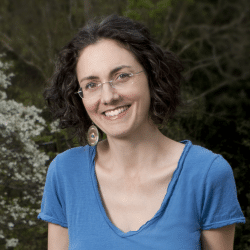Introduction
Brandon Dennison is showing the workforce development sector how they can pioneer new and viable economic markets while at the same time creating direct employment and personal development opportunities for disadvantaged workers, dramatically transforming a stale field and helping whole regions see and seize their potential.
The New Idea
Brandon, born and raised in southwestern West Virginia, understands better than most just how broken our national “workforce development” sector is. With its emphasis on placing recently out-of-work job seekers in employment, it has been designed to tackle “circumstantial poverty,” not generational poverty, and has proven ill-equipped to pivot when jobs disappear.
In the face of these challenges and through Coalfield Development, Brandon shows how local backbone organizations can reimagine the workforce development sector as one that effectively does the “economic R&D” to open wholly new fields and cultivate entrepreneurial talent. New sustainable agriculture, solar energy, construction, and tourism enterprises - among others – not only employ local ‘trainees’ for roughly 2 years in an innovative model that combines employment, education, and mentorship, but also graduate talent into newly launched sectors in one of the most depressed economies of North America. Not only are new markets created, but they hold more wealth and opportunities in the more diversified rural economy. Since the model formally taps local organizations (and through them, state and federal funds), engages regional community colleges, and draws from local history and culture while engaging local entrepreneurs as resources, the changes for “crewmembers” and the community alike are deep and lasting.
Today, Brandon’s model is spreading in two ways. On the one hand, hundreds of people have graduated from the program or been directly trained in modern workforce development skills. On the other, Brandon is developing a wider Appalachian network of other local backbone organizations to launch their own social enterprises and training programs, through what he is calling the SEED Partner strategy. At the same time, they’re “shifting from measuring success by jobs created and degrees earned to markets created via systems affected and leadership capacities developed across the community.”
The Problem
While popular culture presents Appalachia as a region plagued by all manner of problems, life-long resident Brandon Denison is focused on what he has diagnosed as the two root causes: the undiversified economy and the stale and outdated workforce development system.
Throughout the region, for the last hundred years, jobs in coalmines were almost a birthright, until they suddenly started to disappear. Of course, Brandon is quick to point out that even when the coal industry was booming and employment rates were high, these were still “Boom and Bust” jobs, wealth didn’t pass on down generations, and wages – even if considered lucrative locally - didn’t fully cost the health impacts of such hard, toxic work. And at the economic level, local spending on anything but coal itself essentially meant that those hard-earned wages eventually ended up in someone else’s pocket, out of town. With no agricultural, textile, manufacturing, or any other significant industry in “coal country”, spending on food, clothes, cars, appliances, and the like slowly drains the local economy.
An undiversified economy also breeds a monolithic and less resilient workforce. One industry’s demise directly translates into a higher unemployment rate; in the region today that figure is 5.3%, higher than the national average. More concerning is the fact that the workforce participation rate is only 49%, meaning the majority of working-age adults have completely given up on finding work and are no longer counted in the unemployment statistics. In response, a large band of state-level development offices and federally-funded workforce development agencies and offerings have been developed. The problem here is that the efforts to diversify the Appalachian economy are very traditional and essentially resemble “smokestack chasing.” They are designed to woo the next best paternalistic mega-employer with industrial parks, tax credits, government backed loans, and even grants, despite the fact that few ever come. On the other hand, the workforce development set is too narrowly focused on placing unemployed people – one person at a time – in whatever jobs might remain. And though it’s counterintuitive, Brandon points out that since these highly reactive workforce development agencies are dependent on market forces and the needs of existing businesses, people living in the rural areas experiencing the fastest rate of job loss are least likely to be helped. Workforce development agencies act like placement agencies; if there are not jobs for you to get placed into, you are out of luck.
This emphasis on job placement led Brandon to another design flaw in the workforce development sector: the fact that our country’s policies and systems are set up to address what he calls “circumstantial poverty”, not widespread or generational poverty. In towns across America, workforce development offices are where you go after you’ve lost your job and need help finding a new one, or as part of the terms of your unemployment benefits where you need to show you are actively searching for new employment. There you will find someone to help you scour online listings of local openings and apply. But what happens when there isn’t a job opening to which an out-of-work individual can apply? And how does professional assistance editing and submitting your resume help when you’ve grown up in a home where you’ve never seen your parents get up and go to jobs, much less held one of your own? These are the realities of generational poverty, and these challenges are not being met.
Generational poverty, dependency, and other challenges contribute to extremely low workforce participation rates. This in part explains why the current local employers that do exist report having job openings, but “not being able to find trained workers to fill those jobs.” The solution here has been for states to form “Workforce Innovation and Opportunity Boards” which are tasked with developing job training and job placement services. Brandon has noted, however, that “this traditional approach… doesn’t really cultivate opportunity for people.” (In one recent example, 800 out-of-work miners got state-sponsored training to become certified HVAC technicians, in an area served by five HVAC companies.) Not only are the market dynamics often off, but the underlying challenges of poverty are not addressed, and the whole person is not served. Furthermore, focusing on job skills for a narrow set of local business comes at the expense of fostering a more diverse, dynamic, entrepreneurial, and well-educated workforce. Brandon believes deeply in the need for “workforce development”, just not in how that sector is set up to achieve that goal.
The Strategy
Brandon has developed a model for a new workforce development intervention with the potential to transform lives, not just in places living through massive economic changes against a backdrop of generational poverty, but for rural communities across the country as well. His solution is in two parts. He and his team at Coalfield Development, a 501c3 nonprofit launched in 2010, show that first we must diversify our economies, and then we need to build a more proactive, dynamic, and market-shaping workforce development sector. While the braided streams of work make the effort more complex, in isolated and economically depressed areas jobs are the hook, and community catalysts like Coalfield need to both create them while also developing the steady pool of talent for the emerging fields of work.
One happy consequence of an undiversified economy is that many opportunities exist, at least for people who choose to look at these gaps as areas for growth. Coalfield believes that a diverse set of economic activities is necessary to revitalize local economies. And because they intentionally work in socio-economically distressed communities “with broken institutions and failed markets”, they show how workforce development actors can - and must - act like an entrepreneurial laboratory in setting up new enterprises. The five social enterprises they’ve launched to date each build off of an existing strength or asset, like the fact that almost all underground miners are licensed electricians, or working the land is valued. The enterprises are Revitalize Appalachia (green-collar construction), Rediscover Appalachia (arts and culture), Rewire Appalachia (solar power), Refresh Appalachia (sustainable agriculture), and Reclaim Appalachia (mine-land reclamation). Each took an opportunity area not quite ripe for strictly for-profit ventures and converted perceived liabilities -- like dilapidated buildings, former strip mines, disconnected workers, or untested business ideas --into assets. Coalfields “REs” include the first licensed solar installer in the area, the first GAP certified farm in the region, and the first LEED general contractor in southern West Virginia and serve a 5-county area that takes roughly 3.5 hours to drive across. Right now each enterprise operates as a training program with revenues covering a greater percentage of their costs. As they are profitable, the enterprises convert into wholly-owned-by-the-nonprofit, B-Corps subsidiaries.
Brandon points out that in this way the “REs” are essentially performing economic research and development and shaping new, emerging markets, noting that “it is becoming important for our enterprises not just to be employers in their given industry, but to actually help grow and improve the entire market through networks, professional development, training, policy development, and knowledge dissemination.” That said, “the challenges of generational poverty are much more complex than simple economics.” That’s why Coalfield’s model doesn’t just launch new enterprises, but uses each as a platform to cultivate and emphasize the need for learning and growing at the individual level. In all they do they champion an important mindset shift away from one “job for life” and towards life-long learning. Their work, then, for the many people it reaches, serves to “inspire the courage to grow, activate the creativity to transform perceived liabilities into assets, and cultivate the community needed for real opportunity in Appalachia through employment, education, and mentorship.”
Employment, education, and mentorship come together – and are transformed – through Coalfield’s novel “33-6-3” model. Crewmembers (what others might call “trainees”) work 33 hours on-the-job each week while also carrying 6 credit hours of coursework delivered in partnership by a local community or technical college and 3 hours of personal development coaching on issues like career planning, time-management, emotional health, physical health, and communication. When a crewmember has earned an Associate’s Degree and at least four professional certifications from the participating community college they graduate from the program, usually after a period of about two years. Graduates are then placed with high-paying employers throughout the state, are hired on fulltime at Coalfield, or entrepreneur in their chosen field.
Having just reached the milestone of graduating their 100th crewmember, Brandon and team demonstrate to local employers the value of lifelong learning and taking a holistic view of their communities’ talent base. They demonstrate to community and technical colleges the same need for a talent mindset-shift, but also the need for real world skills to be developed in the real world and to be developed for emerging industries. And to other economic revitalization or workforce development organizations, they are modeling how to be a more active and effective force in shaping new markets, not just acting as a job placement agency. For example, in the case of Refresh Appalachia, the participating local community college didn’t even offer courses (much less certificates) in agriculture, but in order to provide credits to crewmembers in the 33-6-3 model they created a curriculum and have since been enrolling students more broadly in courses that will help more people prepare for careers in local sustainable agriculture.
Prone to speaking in colorful metaphors, Brandon has shared how important it is to “create some riverbanks” so that he and his team’s focus doesn’t get too broad. While many individuals and institutions express interest in his work, he believes the model is most transformative for rural communities that are economically un-diversified. Through replicating the success of Coalfield, he is helping other rural communities like his “grow the economic pie rather than fight for small slices.” Brandon knows that what he’s doing is working, but also that it’s not big enough to directly meet the needs of everyone in these other rural communities. So he is developing a network of Social Enterprise and Economic Diversification or SEED partners throughout the Appalachian region. These partners come in as workforce development nonprofits tired of working in the old system and eager to replicate what Coalfield has accomplished. There are already two such orgs – the first SEED Partners – piloting their own enterprises (with seven more in the pipeline). As they embrace the new practice of market formation as a foundation for their workforce development work, SEED Partners receive in-depth technical assistance and benefit from jointly developing products and projects across the Coalfield-convened network. Furthermore, Coalfield helps fundraise and generate revenue with these partners according to individualized MOUs and in line with Coalfield’s ambition to help shift the work of “workforce development” organizations from serving individuals to doing R&D on emerging opportunities and shaping markets.
Another way Brandon will change the wider workforce development system is through influencing the funders. Roughly 40% of Coalfield’s revenue comes from federal grants, but very little comes from the state workforce system itself because Coalfield’s model is so non-traditional. As Coalfield shows how much more effective their crew members are at not only landing jobs but launching into life-long careers, they hope to unlock more resources for their more effective strategies and replication work. Coalfield wants its success to signal that the system can shift away from serving current incumbent corporate needs and towards market and talent creation.
Brandon has seen how, when a place becomes dependent on something like coal, it can get “manipulated into believing there is no way to survive without coal, susceptible to thinking climate change is a hoax, and therefore shaping counter-productive politics around environmental sustainability.” While we’ve already shown how the 33-6-3 model helps launch enterprises and revamp educational offerings, it’s worth nothing that the “3” (signaling the weekly hours dedicated to personal development) in the Coalfield model empowers individuals to build social, intellectual, environmental, and financial capital. Ultimately this helps create what Brandon points to as “the conditions for people’s lives to change from cynical apathy to inspired citizenship and to become unlikely leaders in developing climate change – and other – solutions.” Practically speaking, crewmembers start each day with a “Personal Development Journal” with prompts on a theme. For the theme of focus, crewmembers go skeet shooting or join a free-throw basketball competition and study a West Virginian who embodies that value. (For focus it’s writer and novelist Pearl S. Buck, but examples across the year are diverse in race, gender, ethnicity, and class and help crewmembers learn their history, build pride, and “show that amazing talent comes from right here in Almost Heaven”).
This pride in self and in place is, it turns out, another key ingredient in tackling generational poverty. The depths of that pride, and the success that Coalfield has had to date and through its SEED Partners helps remind everyone touched by it that Appalachia can be “more than just one thing to one industry.” By serving as systems-leaders, shaping whole new markets, developing entrepreneurial talent, and transforming the wider workforce development sector, Brandon is helping prove that “diversity always makes a community stronger (just as the most diverse ecosystems in the world are the most vibrant)” and that workforce development sector can help usher in those changes.
The Person
Brandon was born and raised in southern West Virginia. He recalls that “when I would travel on family vacations or to Boy Scout camp, people would act sorry for me when I told them where I was from. This confused me, because I had a great childhood. Yet there was no denying the painful poverty all around me in my home state.”
During college, Brandon was the Youth Director for a Presbyterian Church that instilled in him a deep commitment to social justice by exposing him to conditions at Native American reservations, inner city soup kitchens, and apple orchards worked by migrant workers. But a pivotal moment occurred just down the road in Williamson, WV where, when Brandon was doing home repair volunteer work, he was approached by two young men with tool belts slung over their shoulders asking if there was any work available for them. It only took a few moments for Brandon to explain that they were volunteers and for the men to turn and walk away, but the exchange stayed with and really haunted Brandon. People were willing to work, to learn, and to be part of something, but traditional ways of helping were undermining those efforts. In 2010, Brandon launched what had the makings of a traditional affordable housing non-profit except that he employed the local community in all roles. But as he began to appreciate the difference between circumstantial and generational poverty, he has transformed Coalfield from a “Band-Aid” and into a force for change across the region.

 Tile image
Tile image


